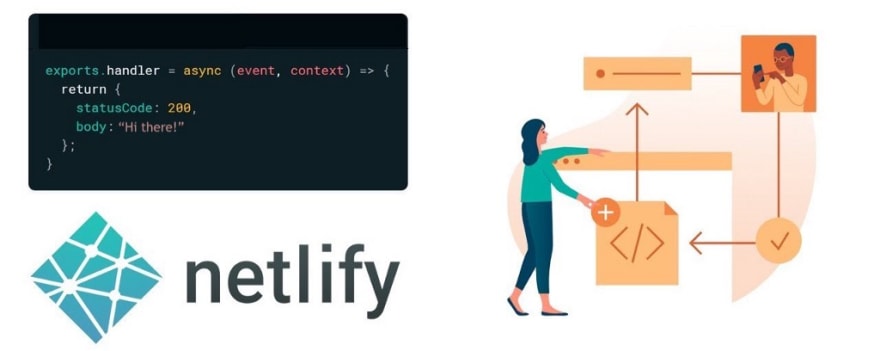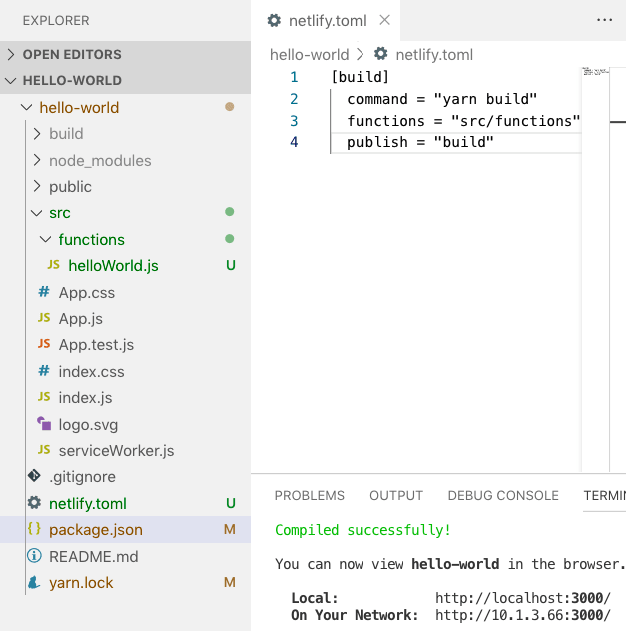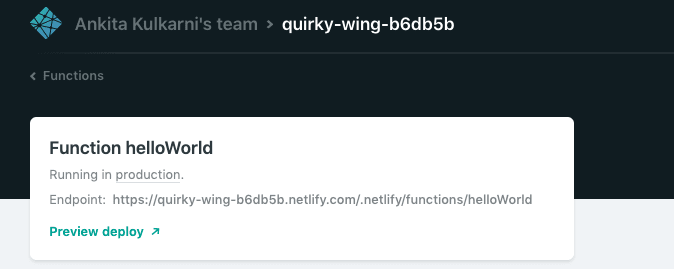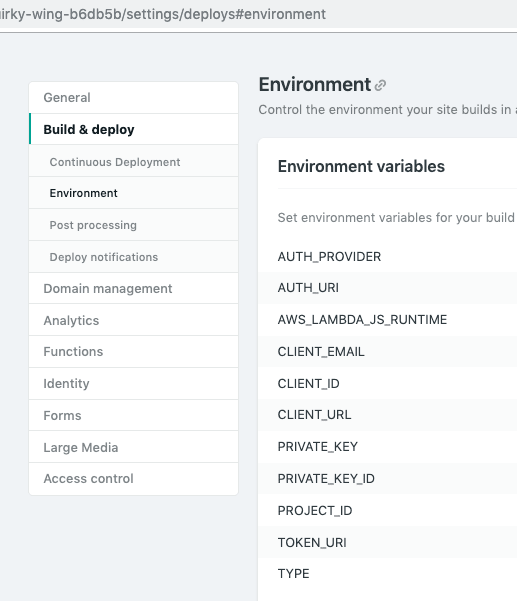An Interest In:
Web News this Week
- March 28, 2024
- March 27, 2024
- March 26, 2024
- March 25, 2024
- March 24, 2024
- March 23, 2024
- March 22, 2024
How to get started and debug Lambda functions
 Get started with Lambda functions
Get started with Lambda functions
The best way to learn anything is to play with it on a project and build something. As I started learning about Lambda functions, I had this list of questionsthat kept coming to mind. To help you better understand Lambda functions, Ive converted all of my questions, and their answers into a helpful blog post to get you started. Lets dive in!
What are lambda functions and why are they so popular ?
https://medium.com/media/1402eea3d30c09d34956ea82b5e0a934/href
Lambda functions replace the backend APIs as you dont need to have a separate backend repository, but store your lambda functions in the front end itself. They follow the supply on-demand model i.e. they will only run when you need them . Unlike your server, they are not running all the time which means you end up saving a lot of resources, and gives you a performance boost.
You are not maintaining two repositories one for front end and the other for the backend but just one which is cool. You would call your functions from your front-end the same way you would call your APIs, i.e. using fetch.
These reasons were enough for me to get started using them on a project. Plus, since Lambda functions are trendy right now, and I was really excited to try them out.
So how do I get started ?
The best way to get started is by searching out some starter documentation online (like this blog post ) . That gave me a bunch of results like this one: https://docs.netlify.com/functions/overview/. This resource really did a good job of explaining what Lambda functions are. I also learned that I could just get started by building a hello world function and deploy it using my Netlify account. This seemed easy.
I created a project using create react app using the following command as I wanted to build my front end with React.
npx create-react-app hello-world
I then installed netlify-cli package so that I can start creating lambda functions in my project.
Please note, there are two main ways of building your lambda functionsnetlify dev and netlify lambda. This doc explains when to use what.
- netlify dev: a new way of working with lambda functions.
- netlify-lambda: a shortcut to install function dependencies in production and, (if needed) bundle functions with babel and webpack if you need to (e.g. for writing functions with typescript).
Where can I add my functions code?
You can declare a path to your functions directory inside netlify.toml, the convention is to call them functions but you can call it whatever you want. netlify.toml is where you can tell Netlify to go look for your lambda functions. I created a functions directory inside my src and then created a primary hello-world function inside that. I used this post to write a hello world function: https://functions-playground.netlify.com/
exports.handler = (event, context, callback) => { callback(null, { statusCode: 200, body: "Hello, World" });};My netlify.toml file:
[build] command = yarn build functions = src/functions publish = buildso far so good
How can I run my functions locally?
Get the netlify cli to test your functions locally. Netlify CLI is a command-line utility that will help you to run and debug your functions. You can just run netlify dev to see if everything works.
Here is how my project structure looks like:
Here is how you run functions from your browser:
How can I deploy these functions on Netlify along with my front end?
https://medium.com/media/4b7783b26029c43960280eb061c2c944/href
If you use netlify-dev, you dont need to use npm-run-all to run your functions and front end in parallel. You need to use netlify dev to start your functions and front-end.
"scripts": { "start": "react-scripts start", "build": "react-scripts build"}Deploy your project to Netlify
You can use the Netlify CLI to deploy your functions or just push your code to Github and connect your repository to Netlify. Here is a good post on how to do that: https://docs.netlify.com/site-deploys/create-deploys/#deploy-with-git
What if my functions want to use different node_modules ?
Lets change the hello world function to use a node module: firebase-admin
To do that, lets create a hello-world functions directory which has the hello world function inside it. It lists users collection data from your cloud firestore database. Every function needs to be treated like its in an isolated environment, so each directory will have its own node modules , any files it needs etc. which means we need a package.json file.
We also need to add a new package.json script called postinstall which will be run by Netlify to install all the node modules for your lambda functions. You do need to use netlify-lambda here to install the node modules for your functions as currently there is no way to do the same with netlify dev.
postinstall: netlify-lambda install
Please dont forget to add a .gitignore file in your functions directory as you dont want to check in all your node modules to Github.
Here is how I structured my functions directory :
Where do I store my secret environment information?
The firebase-admin module requires some config information to run successfully. Im going to use environment variables to store all the config information. On Netlify, you will store these values like
Please note, you dont need to add quotes around your private_key as you will get unable to read key errors.
Lambda function with firebase-admin
Here is my code that uses firebase-admin module:
const admin = require("firebase-admin");const config = { type: process.env.TYPE, project\_id: process.env.PROJECT\_ID, private\_key\_id: process.env.PRIVATE\_KEY\_ID, private\_key: process.env.PRIVATE\_KEY.replace(/\\n/g, "\n"), client\_email: process.env.CLIENT\_EMAIL, client\_id: process.env.CLIENT\_ID, auth\_uri: process.env.AUTH\_URI, token\_uri: process.env.TOKEN\_URI, auth\_provider\_x509\_cert\_url: process.env.AUTH\_PROVIDER, client\_x509\_cert\_url: process.env.CLIENT\_URL};admin.initializeApp({ credential: admin.credential.cert(config) });const dbInstance = admin.firestore();const getUsers = () => { const userRefs = dbInstance.collection("users"); return userRefs.get().then(snapshot => { return snapshot.docs.map(doc => doc.data()); });};exports.handler = function(event, context, callback) { getUsers().then(data => { callback(null, { statusCode: 400, body: JSON.stringify({ data }) }); }) .catch(err => { callback(null, { statusCode: 400, body: JSON.stringify({ err: err.message }) }); });};Which node.js version does Netlify support?
Its important to ask yourself, which node.js version your package is compatible with? This is what it says in the docs
By default, Netlify uses Node.js 8.10 as runtime for all new serverless functions written in JavaScript. You can override this by specifying the desired runtime with an environment variable.
For example, to use Node.js 10 for all future serverless functions deployed, set the variable AWS_LAMBDA_JS_RUNTIME with the value nodejs10.x
I had to set AWS_LAMBDA_JS_RUNTIME to nodejs10.x as firebase-admin is compatible with that. This is very important as your functions might not work if you dont use the correct node.js version and might return a blank screen. You should always read your logs but this is when you should definitely read the logs for more clues.
How to debug Netlify functions ?
https://medium.com/media/21da8fe0642a7f6ebda7d877885bab42/href
Netlify CLI is very helpful to debug your lambda functions. I like to use netlify deploy which basically deploys the current instance of your lambda functions and gives you a live preview. You can test your functions right away without having to push your code to Github and wait for it to deploy. It also provides you with a link to the logs which you can use for debugging reasons if something works locally but not on Netlify. The turnaround time is pretty fast.
Please note, the logs and the draft URL changes every time you publish a new build using netlify deploy
How to call functions from the front-end ?
I used fetch to invoke my function and then called getUserService from my front end. Here is how I did it:
export const getUserService = () => { return fetch(`/.netlify/functions/helloWorld`).then(response => { return response.json(); });};If you invoke your function like localhost:, you will get a CORS error as you are trying to call your functions port from your front end port which is different.
I hope this helps and gives you a good overview of how to get started and debug your functions. The code is deployed here if you want to take a look at it: https://github.com/kulkarniankita/hello-world-netlify.
If you have any questions, please post it in the comments below.
Original Link: https://dev.to/kulkarniankita9/how-to-get-started-and-debug-lambda-functions-ag6
Dev To
 An online community for sharing and discovering great ideas, having debates, and making friends
An online community for sharing and discovering great ideas, having debates, and making friendsMore About this Source Visit Dev To







